Seven Things To Consider About Storytelling In Web Design

Featured Image: iStock/id-work
Remember the days our nannies told us stories about fairies and princesses? These days storytelling is much more than that, and the storytellers aren’t just our relatives.
Telling stories has become essential for brands to create deeper connections with their audience. In web designing, storytelling is used to engage and entertain the user. Moreover, it makes a website memorable and unique.
- Storytelling helps to create an emotional connection
- Telling a story on your website grabs user attention
- Stories let you stand out from an ocean of competitors
So how can you avail these benefits?
Here are seven considerations I think you definitely need to focus on when using storytelling as a tool for website design.
1) Know Your Audience In and Out
Of course, you will find people who get impressed by your story, come to the landing page, and then bounce off just like that. And knowing someone completely is a challenge, but when it comes to users, it is relatively easy. Thanks to many analytical tools (Google Analytics and Search Console) that help us track human behavior.
With the assistance of data collection software, storytellers (brands) can assess a buyer’s journey that entails three essential stages (awareness, consideration, and decision). This journey helps to analyze a potential user can be converted into a lead and eventually a customer.
- Notice the kind of elements users click on a web page
- Record where and how the users scroll through the page
- See the dwell time and bounce rate of the users coming to your site
- Take the help of algorithms that track user activity on your website
- Focus on the keywords that are relevant and searchable
Why do you need to know your audience? No, don’t worry. No one is judging you if you have this question in your mind.
Following are a few benefits of knowing your audience:
- You need to know your audience because it helps you to create better, more promising, and inspiring stories.
- With the help of such data, brands can present their stories in an attractive, enticing, and unforgettable way.
- With a person in mind, people can position their businesses more accurately and memorably.
- Having (psychographic and geographic) data about your audience assists brands in creating stories that matter.
So now you know how important your audience is.
Does your story inspire your audience? Share your success with me in the comments below.
2) Investigate Your Competition
Before getting ahead of the game by brainstorming your ideas, consider what your competition is doing. What stories define your competitors? That’s a question not to ponder on but to research about.
The internet gives us easy access to information, so unlike in the old days, you don’t need to head out to explore competitors or discover what they’re saying.
Ways to check out what the competition is doing:
- Check their social media feed and see what they’re posting and what kind of hashtags they use.
- Visit their website and explore the home page, the web pages, and the landing pages. See how visual and text content is used all over the site.
- Check out their promotional campaigns, such as through web banner ads and videos. Notice how they use these forms of marketing to share their brand story.
- Don’t forget to see what they’re posting on their blog. Are they following a particular theme? Are they occasionally focusing on a specific style or kind of post?
Right, but what are you supposed to track? What should you notice? What are you looking for?
- The storyline
- The setting
- The characters
- The conflict
- The resolution
When looking at a story from a brand notice what the concept is and how it has been presented.
Once you’ve done your research on competition, it’s to focus on your brand, website, and story.
Let’s take the example of life-long competitors Pepsi and Coca-Cola.
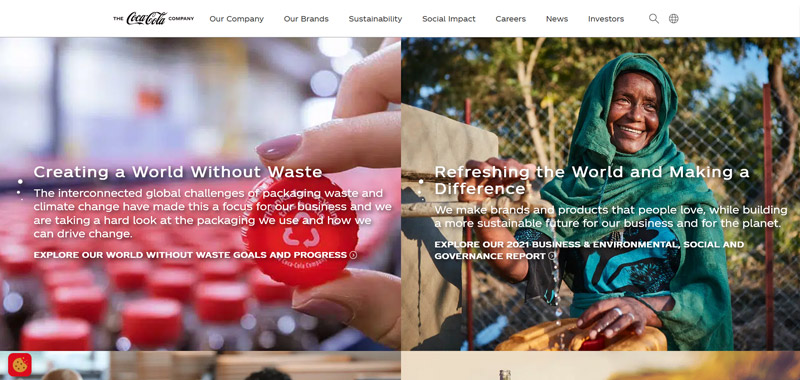
Image Source: coca-colacompany.com
Coco-Cola’s website is focused on social issues like waste, global warming, food, and water scarcity. That’s the story they’re telling.
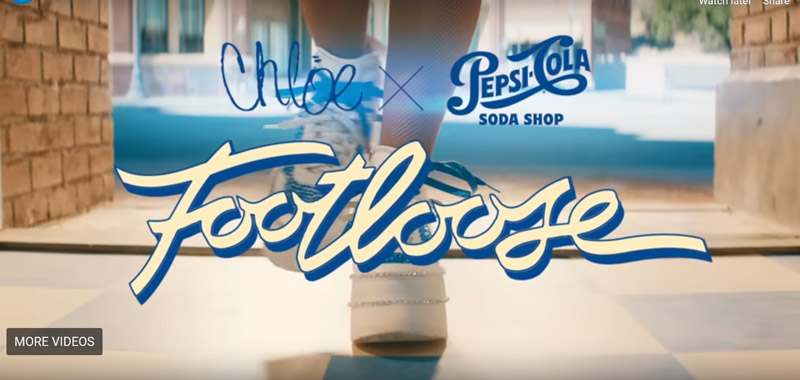
Image Source: pepsi.com
Pepsi has taken a youthful approach by displaying culture with the help of music.
3) Observe Your Surroundings
When brands such as Nike jazz up their home page with visuls that connect the brand culture and people.
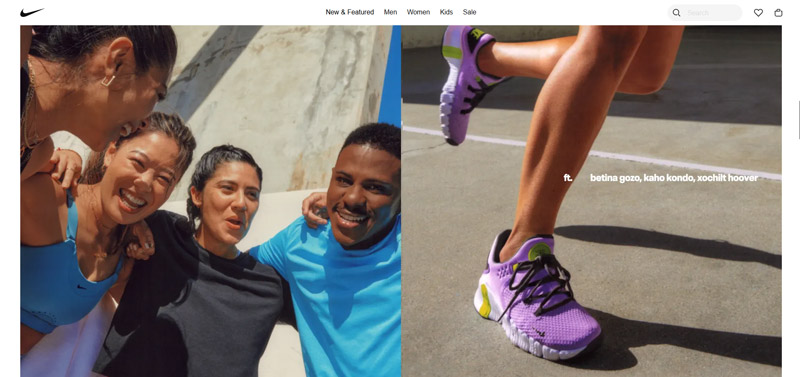
Image Source: nike.com
Thus, it is important for anyone telling a story to know their surroundings. For example, McDonald’s just recently released their new marketing campaign that took a simple eyebrow raise movement and related it to the logo design of the famous fast-food brand.
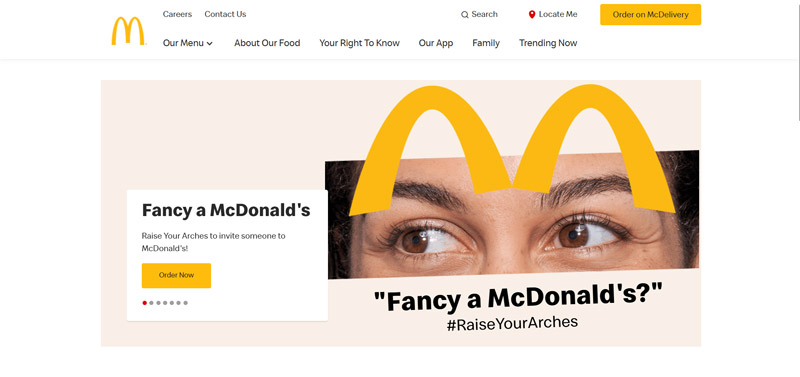
Image Source: mcdonalds.com
When considering your surroundings for storytelling in web design, what should you observe? Here is a list of things to notice about culture and people.
Things to see in culture:
• Language

Image Source: pexels/Henry & Co.
• Religion

Image Source: pexels/Suraphat Nuea-on
• Traditions

Image Source: pexels/Yan Krukau
• Rituals
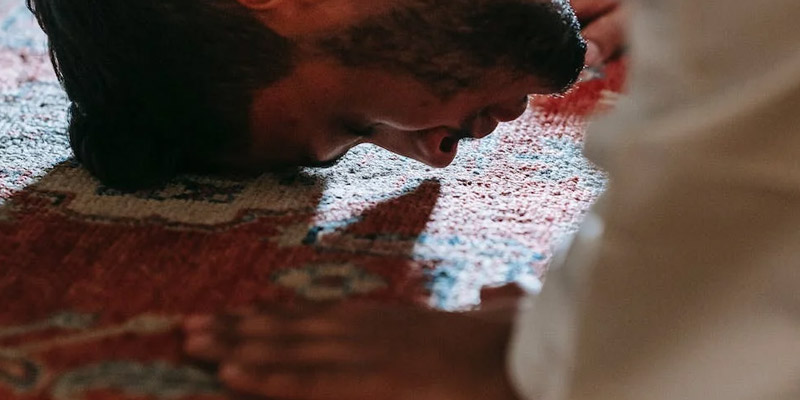
Image Source: pexels/Michael Burrows
• Art

Image Source: pexels/Pixabay
• Signs

Image Source: pexels/Pixabay
Things to see in people:
• Manners

Image Source: pexels/Karolina Grabowska
• Dressing

Image Source: pexels/Ketut Subiyanto
• Gestures

Image Source: pexels/
• Personality

Image Source: pexels/Andrea Piacquadio
• Emotions

Image Source: pexels/Nikolaos Dimou
What’s The Message?
The message is an integral part of any story. You’ve seen movies, right? Would you find a storyline interesting if there was no moral of the story, no lesson learned, or no message? I don’t think so. At least, I won’t. All stories deliver some kind of message.
- Do you want to share your brand’s vision in the story?
- Do want the message to be about your brand’s mission or goals?
- Do you want the resolution of the story to be a brand promise?
- Do you want the moral of the story to revolve around people or your brand?
These are some of the questions you need to ponder when creating a story for your brand.
5) What’s Your Strategy?
With the advancement in technology, spreading a story has become easier. We have the world wide web that is accessible globally and so the story brands tell on their website can be seen by anyone across the planet.
When it comes to storytelling in web design, brands must strategize the way they will tell the story. What form will the story take? Will it be shared in one go or in bits and pieces with teasers and promos? These are a few questions that can help you make a better storytelling strategy.
Let’s take a look at some of the times you will need a strategy in the process of storytelling.
- When you are writing the story and making its storyboard
- When you have to pick places, characters, and props
- When you need to decide how to deliver it and when to share it
- When you have to figure out how the story will sync with the UX and UI of your site
What will a strategy help you with?
- A strategy will help you lay the foundation of your brand’s narrative
- A strategy will help identify the stories your target audience relates with
- A strategy will set your brand’s objectives and goals in a meaningful manner
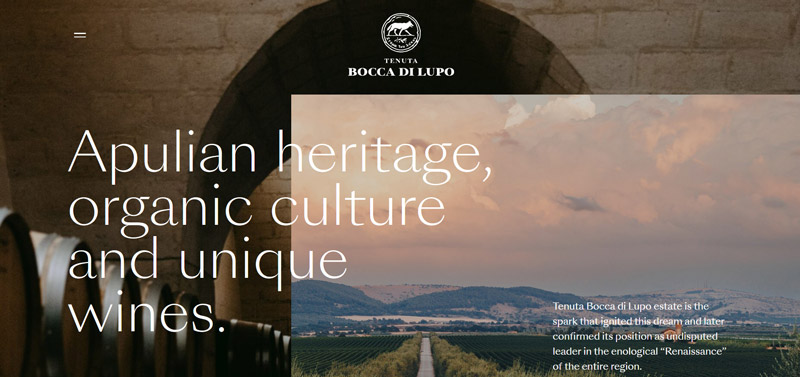
Image Source: tenutaboccadilupo.it
6) Define Your Call-to-Action
In brand storytelling, the call-to-action is what everything should lead up to. It is the reason why brands tell a story. Well, yes one very important purpose is to make connections with the audience but the other is to invite or urge them to take action.
So one of the things to consider about storytelling in web design is to define your call to action.
- Do you want people to end up buying your product or service?
- Do you want to increase the dwell time on your website?
- Do you want people to simply have the knowledge of what your brand offers?
- Do you want your audience to sign up or subscribe to an e-Book or newsletter?
What do you want the people to do? That’s the real question to consider when pasting a story on your website.
Telling people what to do after entertaining or inspiring them with a story is more convincing than shoving advertisements at them.

Image Source: impactility.com
7) Website’s Design & Structure
When considering the design and structure of your brand’s website, keep in mind that the user experience and user interface play a major role in the story you tell. For example, while one website you visit gives you vintage vibes, the other will appear modern and trendy. The design of the website can seriously complement your story, or vice versa.
In fact, you can use web design elements and principles to tell a story than to make a video. Things like color, shape, line, typography, imagery, composition, perspective, and space can all be treated as assets to deliver the brand story.
Thus, before creating a story, make a website or think about the story you want to tell and then make the web design. Choose your way.


What else do you think brands should consider when adding a story to their website? Share your idea in the comments below.
Embed this Infographic on your site using the html below:


